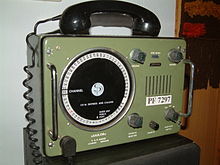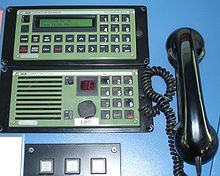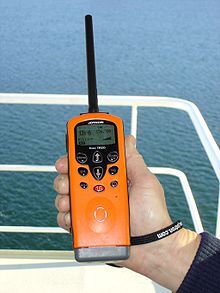Blogs
Marine VHF radio is installed on all large ships and most seagoing small craft.
It is used for a wide variety of purposes, including summoning rescue services and communicating with harbours, locks, bridges and marinas, and operates in the VHF frequency range, between 156 to 174 MHz. Although it is widely used for collision avoidance, its use for this purpose is contentious and is strongly discouraged by some countries, including the UK.
A marine VHF set is a combined transmitter and receiver and only operates on standard, international frequencies known as channels. Channel 16 (156.8 MHz) is the international calling and distress channel. Channel 9 can also be used in some places as a secondary call and distress channel. Transmission power ranges between 1 and 25 watts, giving a maximum range of up to about 60 nautical miles (111 km) between aerials mounted on tall ships and hills, and 5 nautical miles (9 km) between aerials mounted on small boats at sea-level. Frequency modulation is used, with vertical polarization, meaning that antennas have to be vertical in order to have good reception.
Modern day marine VHF radios not only offer basic transmit and receive capabilities, many package additional features that truly make these radios indispensable for the mariner. For the last several years all fixed mount marine VHF radios have required by certification some level of "Digital Selective Calling" (DSC) calling capability. Even the basic set has the ability to alert other boats, ships, and shore stations with a single button press. More expensive radios offer far more extensive DSC capabilities. These may include position polling or a variety of group calling options. Most mid-priced marine VHF radios integrate other features too. Many have the ability to connect to a remote microphone and act as an intership intercom system. Still others have a built-in hailer that when connected to an external hailer horn can act as a public address system and/or output required fog signals when conditions warrant. The most sophisticated marine VHF radios have an alphanumeric keypad for data entry, are able to connect to optional voice scramblers, and a few even have the ability to use a Bluetooth headset. The newest combination of features offered is the integration of a complete Class B AIS unit with a marine VHF radio.
Marine VHF mostly uses "half-duplex" transmission, where communication can only take place in one direction at a time. A transmit button on the set or microphone determines whether it is operating as a transmitter or a receiver. The majority of channels, however, are set aside for "duplex" transmissions channels where communication can take place in both directions simultaneously. Each duplex channel has two frequency assignments. This is mainly because, in the days before mobile phones and satcomms became widespread, the duplex channels could be used to place calls on the public telephone system for a fee via a marine operator. This facility is still available in some areas, though its use has largely died out. In US waters, Marine VHF radios can also receive weather radio broadcasts, where they are available, on special receive-only channels wx1, wx2, etc. or a normal channel reserved for broadcast in the area in question.

Sets can be fixed or portable. A fixed set generally has the advantages of a more reliable power source, higher transmit power, a larger and more effective aerial and a bigger display and buttons. A portable set (often essentially a waterproof, VHF walkie-talkie in design) can be carried on a kayak, or to a lifeboat in an emergency, has its own power source and is water-proof if GMDSS approved. A few portable VHFs are even approved to be used as emergency radios in environments requiring intrinsically safe equipment (e.g. gas tankers, oil rigs, etc.).
Marine radios can be "voice-only" or can include "Digital Selective Calling" (DSC).
Voice-only equipment is the traditional type, which relies totally on the human voice for calling and communicating.
Digital Selective Calling equipment, a part of the Global Maritime Distress Safety System (GMDSS), provides all the functionality of voice-only equipment and, additionally, allows several other features:
- a transmitter can automatically call a receiver equipped with Digital Selective Calling, using a telephone-type number known as a Maritime Mobile Service Identity or MMSI. The DSC information is sent on the reserved Channel 70. When the receiver picks up the call, his active channel is automatically switched to the transmitter's channel and normal voice communication can proceed.
- a distress button, which automatically sends a digital distress signal identifying the calling vessel and the nature of the emergency
- a connection to a GPS receiver allowing the digital distress message to contain the distressed vessel's position
The MMSI is a nine digit number identifying a VHF set or group of sets. The left hand digits of MMSI indicate the country and type of station. For example, here are MMSI prefixes of four station types:
- Ship : 232, 233, 234 or 235 are the United Kingdom – e.g. a UK ship : 232003556
- Coast : 00 – e.g. Solent Coastguard : 002320011
- Group of stations : 0 – e.g. 023207823
- Portable DSC equipment : for UK 2359 - e.g. 235900498

The accepted conventions for use of marine radio are collectively termed "proper operating procedure." These conventions include:
- Listening for 2 minutes before transmitting
- Using Channel 16 only to establish communication (if necessary) and then switch to a different channel
- Using a set of international "calling" procedures such as the "Mayday" distress call, the "Pan-pan" urgency call and "Securité" navigational hazard call.
- Using "pro-words" based on the English language such as Acknowledge, All after, All before, All stations, Confirm, Correct, Correction, In figures, In letters, Over, Out, Radio check, Read back, Received, Repeat, Say again, Spell, Standby, Station calling, This is, Wait, Word after, Word before, Wrong
- Using the NATO phonetic alphabet: Alpha, Bravo, Charlie, Delta, Echo, Foxtrot, Golf, Hotel, India, Juliet, Kilo, Lima, Mike, November, Oscar, Papa, Quebec, Romeo, Sierra, Tango, Uniform, Victor, Whiskey, X-ray, Yankee, Zulu
- Using a phonetic numbering system based on the English language: Wun, Too, Tree, Fow-er, Fife, Six, Sev-en, Ait, Nin-er, Zero, Decimal
- Slightly adjusted regulations can apply for inland shipping, such as the Basle rules in Western Europe.
- Marine VHF radio is sometimes illegally operated inland. Since enforcement is often the job of the local coast guard, enforcement away from the water is sometimes difficult.
















